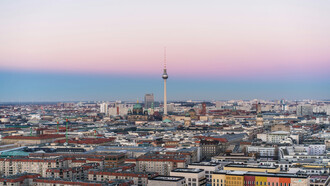This museum is dedicated to adornment, jewellery and caftans which are essential components of Moroccan heritage. “This place thus enriches the cultural development of “Rabat, city of light, capital of culture” and offers another space for meeting and sharing the millennial heritage of Morocco”. The National Adornment Museum has recently undergone major scenography and museography work, entrusted to Christophe Martin, a representative of Christophe Martin Architects. It contains nine exhibition spaces including five main ones plus the patio.
The entrance to the course opens into a reception which acts as a thermal airlock and leads the public into the exhibition spaces. Indeed, the first room is devoted to archaeology, prehistory, history and technologies within parallel an introduction to the history of the Oudayas. The second room is devoted to Amazigh and urban costumes, the third room is dedicated to the men and harnesses and the fourth is devoted to Amazigh jewellery while the fifth is devoted to urban jewellery.
UNESCO Site “The Oudayas” hosts the Moroccan National Adornment Museum
It is located in the historical monument of “The Oudayas”, and it is one of the first museums created in Morocco. It takes its name from its location in the Kasbah of the Oudayas, a historical monument of the capital and classified with its Andalusian garden as a UNESCO World Heritage Site, which was built during the reign of Moulay Ismail (1672 -1727) who used it as a second home. The director of the Indigenous Arts Service, Prosper Ricard, proposed to convert the historic building into a museum in 1915 and it has been called by several names such as "Museum of native crafts and arts", "Muslim art museum" or "Musée Prosper Ricard ".
From its creation, the museum acquires the vocation of an “ethnographic museum” housing various collections from the 18th, 19th and early 20th centuries and testifying to the richness of Morocco's movable and intangible heritage. The first funds for the collection came from a donation from Prosper Ricard and the Indigenous Arts Service.
The ceramic collection was donated by Alfred Bel. Subsequently, the museum was enriched by a collection of silver jewellery donated by Jean Besancenot. In 2006, the Oudayas Museum became the “National Adornment Museum”, to house an exhibition centered on Moroccan goldsmithing, from prehistory to the present day.
The National Adornment Museum inaugurated by Princess Lalla Hasnaa
The National Adornment Museum has the honour to be inaugurated by Her Highness Princess Lalla Hasnaa of Morocco, which pays tribute to the incredible work of Moroccan maâlems and craftsmen. Princess Lalla Hasnaa of Morocco, president of the Foundation for the Safeguarding of Cultural Heritage in Rabat, presided over the reopening of the National Jewelry Museum on January 7, 2023, after 3 years of work. The museum, which features more than 800 jewels, officially reopened to the public on Monday, January 9, 2023.
Visitors can now discover the new scenography of a permanent exhibition, dedicated to adornment, one of the essential components of Moroccan heritage and which dates back 150 thousand years to the Kingdom.
(Mehdi Qotbi, president of the National Museums Foundation)
Princess Lalla Hasnaa visited several rooms in the museum with interest in a room that is dedicated to the historical evolution of the adornment and the manufacturing chain. Another room highlights the history of Moroccan costumes. Male finery and harnesses are also entitled to a specific room, while there is also a room on Amazigh finery and a last one which explains the regional specificities of Moroccan jewellery. During the inauguration of the site, the garden rooms hosted the collections of two great designers: Zhor Rais and Albert Oiknine who presented a collection of old and modern caftans.
The National Adornment Museum is enriched with the personal collection of His Majesty the king
Enriched by the personal collection of Amazigh jewellery of His Majesty King Mohammed VI, the permanent exhibition highlights the richness and diversity of the art of Moroccan adornment. Endowed with an important cultural value, jewellery and ornaments is a social vector in Morocco, highlighting the local aesthetic codes and the cultural and historical heritage of the different regions of Morocco.
This is a first, believes the president of the National Museums Foundation, Mehdi Qotbi, who recalled that “adornment is like looking good, that is to say, being beautiful to give a beautiful image to others. Everything here is to beautify the person. I am very grateful to HM King Mohammed VI for having made his entire collection of Amazigh jewellery available to the National Museums Foundation, the number of which reaches 3,500 pieces. But, in addition to this exhibition of finery, the museum will present 12 performances a year to show what is contemporary, modern and current,” says Mehdi Qotbi.
In addition to the old collections of the Museum, the museum houses a certain number of pieces with their cultural or religious, ethnographic, aesthetic or prophylactic dimension, etc. His journey gives "a complete idea of the geography of Morocco, in particular the cultural specificities of each region, the contact zones, the history of the country and the production workshops of the pieces", explains the curator of the exhibition, Abdelaziz El Idrissi.















